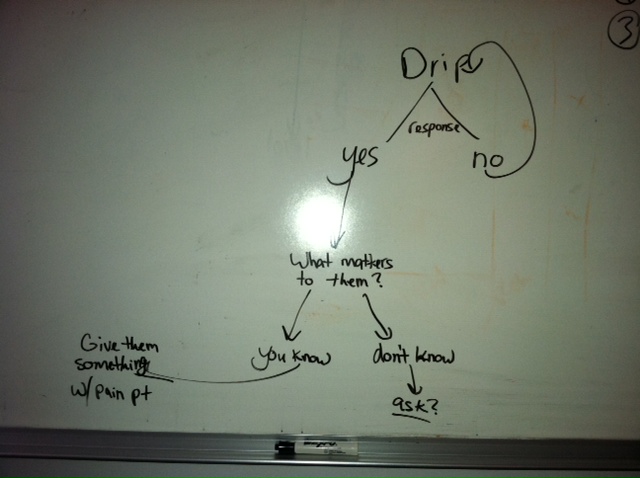A colleague shared a Ted talk with me today from Simon Sinek, it's currently Ted's 19th most watched video.
It's about 18 minutes long and definitely worth watching. You can watch it on YouTube here.
Simon's theory is that most companies and individuals sell and talk about features; i.e. "what we do". He argues that this is a mistake. That the super successful individuals and companies sell their inspiration, or the "why we do it".
To make his point, he asks the question: what makes Apple so different? They're structurally the same as any other computer company. But for some reason, we will buy computers, MP3 players, phones, music, almost anything from them. Whereas for a while Dell sold great MP3 players and nobody would buy them. And Gateway sold great flat screen TVs and nobody was interested.
He argues that the reason is that Apple is selling the "why" while the others are selling the "what". Instead of saying we have the best computers or the lowest cost computers or the best designed computers (the "what"), they say: we're going to challenge the status quo with masterful design (the "why"). People don't buy what you do they buy why you do it.
The most compelling part of the talk is his comparison of TiVo (a failure) to Martin Luther King (an immense success). TiVo had the best product on the market and aggressively sold their features: ability to skip commercials, pause live TV, see recommendations, etc. Instead, they should have sold the 'why'. Something like: we want to give you control over the smallest aspects of your life, by giving you the ability to skip commercials, pause live TV, etc, etc.
On the other hand, in 1963, Martin Luther King was able to bring 250,000 people to Washington, DC on a hot and humid day in August. They all came on the right day and at the right time. He didn't send an E-Vite and he didn't Tweet about the event.
These people didn't go to DC for him or to hear a plan that he concocted. They went because of what he believed. They believed what he believed. He didn't even mention a plan. He talked about his "dream", which was the same as their dream. He inspired. They didn't go there for him. They went there for themselves.
Similarly, people don't stand in line for 6 hours the day that the new iPhone comes out for Apple, or for the new camera on the phone or for the new screen on the phone. No. They go there for themselves. They buy the phone on the first day because it makes them feel a certain way. Apple's cause or their "why" is aligned with their cause.
It's a great concept, and I've touched on this theory a bit over the years with colleagues and clients. But I haven't heard it articulated this crisply in the past. I suspect I'll be thinking (and perhaps writing) a bit about this in the coming weeks.



